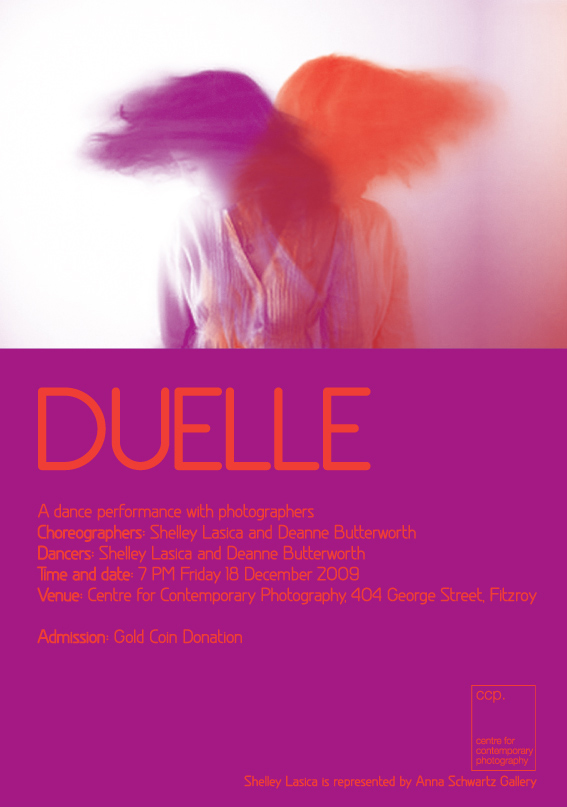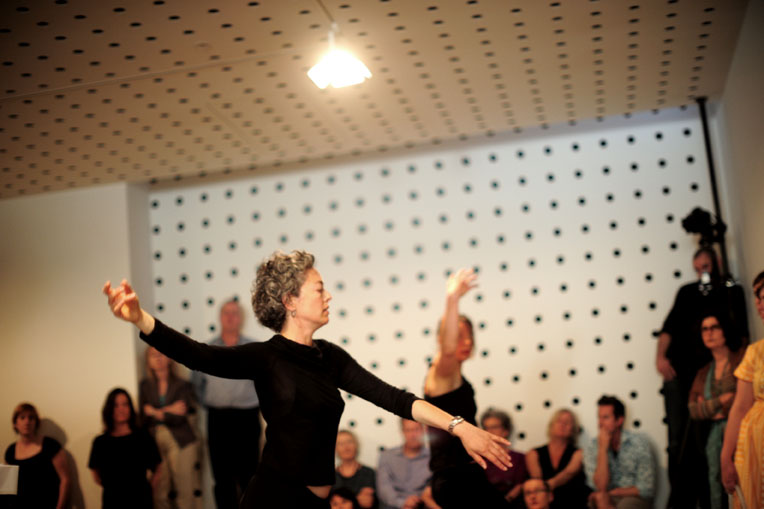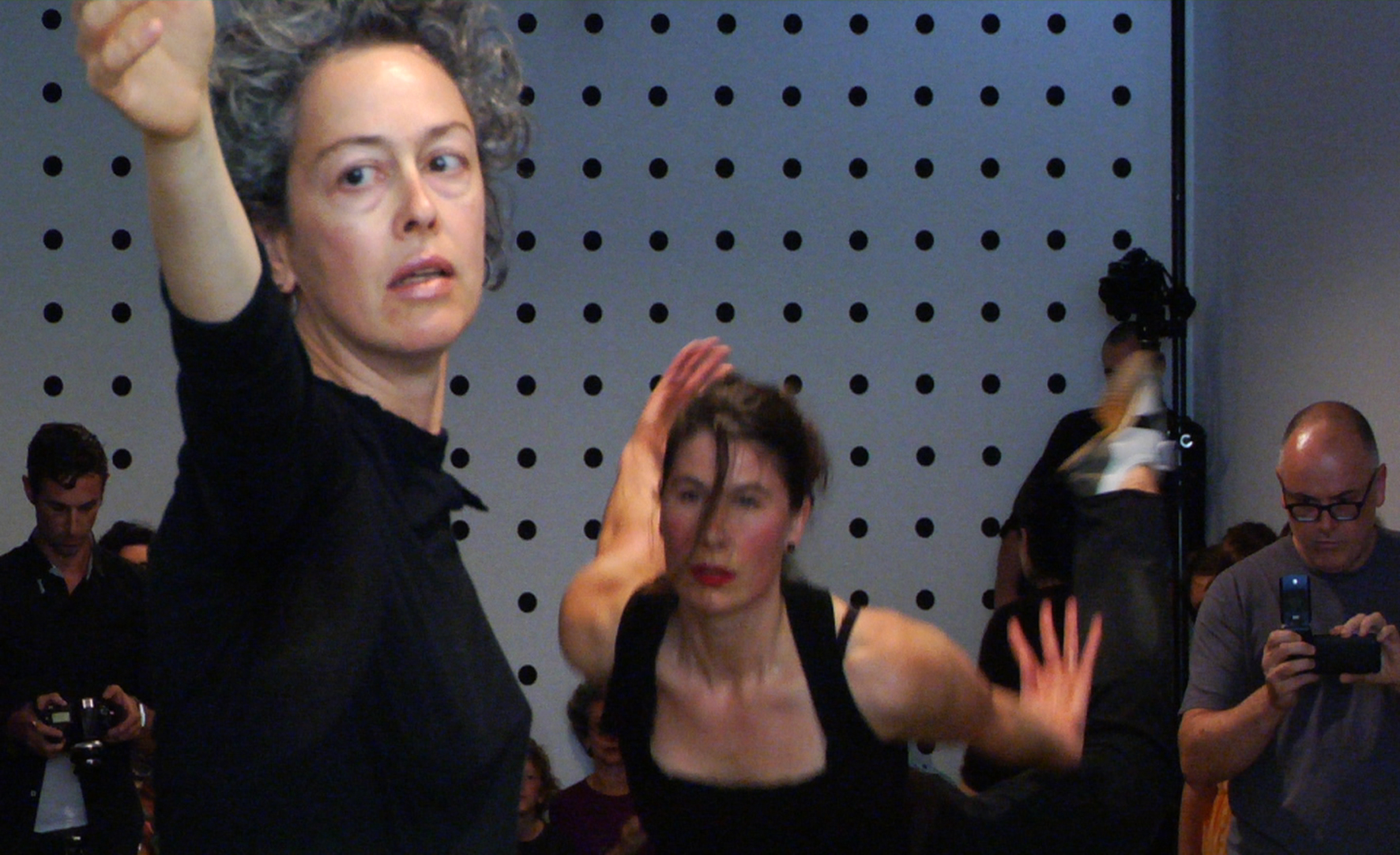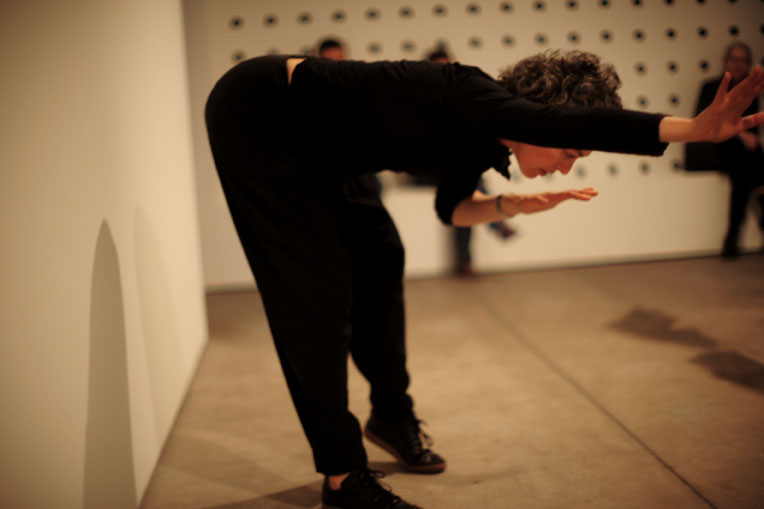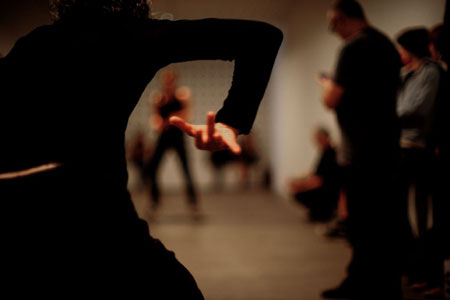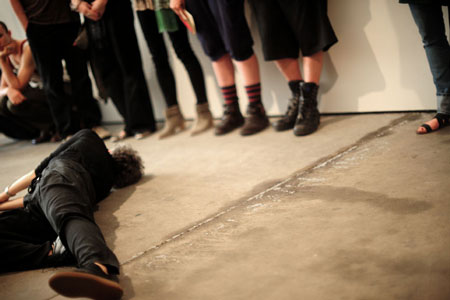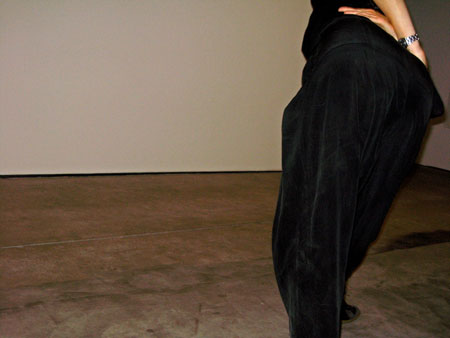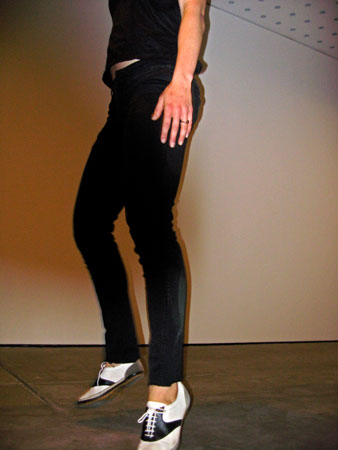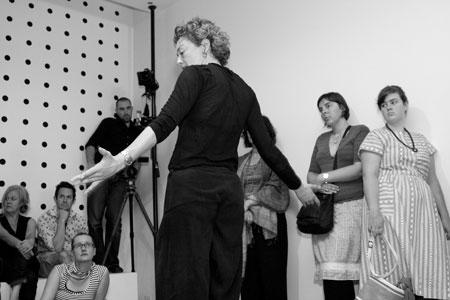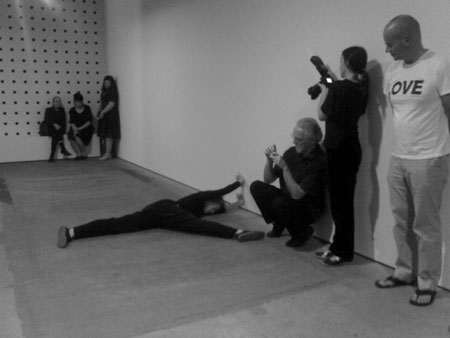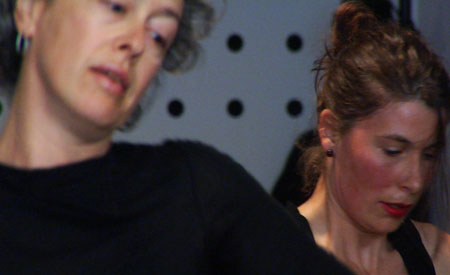Duelle
Duelle was presented at the Centre for Contemporary Photography, Melbourne and CIA Studios, Perth in 2009.
Duelle brings together two solo dances from different times: Lasica’s Behaviour made and performed first in 1993 at artist run gallery STORE 5, and Butterworth’s Dual Reperage first made for With the Lot, a project curated by Kyle Kremerskothen for the parking lot outside Lucy Guerin Inc Studio in April 2009. Recognising synergies between these works, Duelle recognises time slippage, individual languages and the building of a network of meaning and experience.
Both the work, Duelle, and the context within which the performance was presented, separately encourage considerations of time, the stage, the performer, narrative and metaphor. Dance performances are moments that are remembered rather than recorded, with the personal documentation of performances strictly forbidden within most productions. It is for this reason, and as a means of exploring the relationship between movement and the singular moment that the photographing of the performance is such an integral concept within this particular work.
For the performance photographers were invited to participate in Duelle. During the course of the performance, the invited photographers moved amongst the audience and take photographs that captured both the performance and the audience alike.
Project credits
- Choreography
- Shelley Lasica and Deanne Butterworth
- Dancers
- Shelley Lasica and Deanne Butterworth
- Photographers
- Terence Hogan, Dominic Redfern, Concettina Inserra, Patrick Pound and Matt Gringold
Waiting for Duelle
–By Mark Feary
Straddling alongside both walls, as if commuters awaiting the imminent arrival of a train upon a platform, the crowd lies in wait. Click. They anxiously and repetitively consult their wrists as if distrusting of the movement of their timepieces or the electronic digits representing the passing of time. Click. They randomly scan one another, as if waiting for one of the crowd to reveal themselves as something they are not. Click. They fidget and shuffle from side to side as if uncomfortable within their own skin, yet cautiously enough so as not to encroach upon the abyss they have created across the gallery. Click.
After a time, one arrives, and slowly the crowd become transfixed as it approaches. Click. Shifting their weary gazes from one another toward a common cause, united in their collective restlessmess. Click
From the other direction, another arrives, perhaps a different model, not entirely dissimilar, yet dissimilar enough to be distinct. Click. Perhaps it is the way it sounds, the way it lurches, the way these lurches develop their own fluidity and in turn become movement. Click.
Duelle represents an enigma of encounters involving the interchangeability of muse and mentor, with individual works repositioned within a collaborative framework that diminishes the specificities within which each individual work was made. By and large, performative acts such as dance performances exist without visual documentation. After the performance concludes, it exists in the memory - both individual and collective - of those involved and those in the audience. They are events recalled rather than recorded. They are contemporary insofar as they engage with a specific time. As such, they are representative of the here and now and it is with such contemporainity that such performances are recalled. How then does a specific piece age, or rather, what is the slippage between the there and then and the here and now? If the materials remain the same, in its simplest form at least, a body, then how does a piece age in contrast to the form enacting the piece?
Duelle alludes to these considerations of specificity and temporality framework layering another mechanism upon post facto reflection. Through actively engaging photographers within the framing of the performance Duelle positions itself within a specific moment and physical context. Notably, the work is not presented within a traditional perforamative venue but rather a contemporary art space, and more pointedly, one with an emphasis on photographic practice. In this regard, the gallery is not used to present photographic outcomes, but rather as a site to facilitate photographic process.
Through the recording and documenting of Duelle it is lodged within a specific time, if not readily definable presently, then certainly one that will be distinguishable in future. The time evasiveness of the performance will be belied by the hairstyles and fashions of the audience, tell tale indicators of any time. And this is perhaps the crux of the project, to wrestle the performance from memory and mismemory and to lodge it within a definitive setting - creating a framework that surrounds the performance rather than relying on the memory of what has been performed. This newly documented rendition in turn dissolves the temporal and locational specificities of each previous enactment of the individual performances. This is not an act of replacement, for Duelle and its constituent components are now altogether different undertakings, despite involving exactly the same movements.
Click. No carriage arrives yet everybody is transported to somewhere else.
